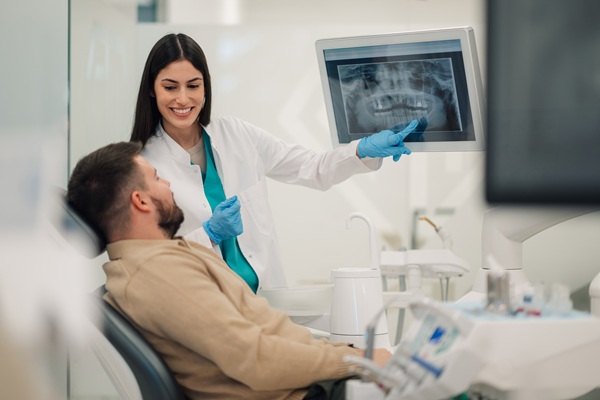Full Mouth Reconstruction: Replacing Teeth With Dental Bridges

Full mouth reconstruction involves replacing and repairing damaged or missing teeth. A treatment plan includes a variety of different treatments, and one common procedure is known as dental bridge treatment. This review takes a closer look at how general dentists use dental bridges to replace teeth during full mouth reconstruction.
Dental bridges and full mouth reconstruction
Most patients have several available treatment options when it comes to teeth replacement during full mouth reconstruction. To help you make an educated choice, the following is an in-depth review of what dental bridges are, how they work during full mouth reconstruction and when they are the best option.
A review of dental bridges for teeth replacement
Dental bridges are a method of teeth replacement that involves connecting a “bridge” of teeth to replacing a missing tooth or a section of missing teeth. The bridge is often connected to natural teeth on each side that serves as an anchor for the bridge. These anchor teeth are known as abutment teeth. If the teeth are not strong enough to support the dental bridge, then dental crowns are placed to strengthen them and improve their size. Dental implants are sometimes used as abutment teeth for a dental bridge as well.
Dental bridges and a full mouth reconstruction
During a full mouth reconstruction, dentists address a range of concerns. Some patients may need to replace missing teeth and restore the health and appearance of natural teeth. In addition to services such as dental crowns to restore natural teeth, periodontal disease treatment and dental fillings, dental bridges offer a unique solution as well. Dental bridges are primarily used to replace missing teeth, and they can replace a single missing tooth or a section of multiple missing teeth.
When to choose dental bridges
Dental bridges are a great choice for patients who have one missing tooth or several missing teeth in the same section. The bridge is connected to each other, so they cannot replace multiple teeth that are in different quadrants of the mouth. They are also a good option for patients who have anchor (abutment) teeth that are healthy or can be restored with dental crown treatment, although implant-supported bridges are an option as well for a more secure hold and better long-term results.
How does the treatment process work
Teeth replacement typically takes place early on in the full mouth reconstruction process. Treatment varies by patient, but it may involve placing a dental crown or dental implants for reliable abutment teeth, followed by the placement of the dental bridge. After dental bridge treatment, the dentist can work towards improving other dental concerns.
Improve your smile and oral health with full mouth reconstruction
You can improve your smile, oral health and mouth function with full mouth reconstruction. Give us a call today if you need more extensive treatment and want to improve the health, appearance and functionality of your teeth. Our team can address multiple concerns in a personalized treatment plan.
Request an appointment here: https://www.fairfaxdentalcenter.com or call Fairfax Dental Center at (703) 246-1507 for an appointment in our Fairfax office.
Check out what others are saying about our dental services on Yelp: Full Mouth Reconstruction in Fairfax, VA.
Related Posts
A person’s smile comprises many parts, each contributing to the overall aesthetic, including teeth alignment, whiteness, smoothness, and shape, and a cosmetic dentist specializes in all these areas. They can help a patient improve their smile’s appearance so they can confidently show off their pearly whites to the world.However, many people do not realize that…
General dentists recommend adding flossing to your oral hygiene routine once a day. This important practice removes plaque and food debris that brushing alone cannot reach. While string floss is an effective way to clean between your teeth, several alternative methods can make the cleaning process more comfortable and efficient.Flossing is an essential part of…
Whether you are about to book an appointment for tooth implants or you have just undergone the procedure, you probably want to learn proper aftercare to ensure healing and recovery. One of the questions that patients often ask is what and what not to eat after surgery. Although placing implants ensures that you have dental…
Clear aligners are a discreet teeth straightening treatment option that involves custom-fit transparent trays that pull teeth into an ideal position. It is a great way to improve the attractiveness of your smile and fix issues such as crooked teeth, overcrowding, gaps between teeth, protruding teeth and bite complications. Patients who know more about the treatment…
